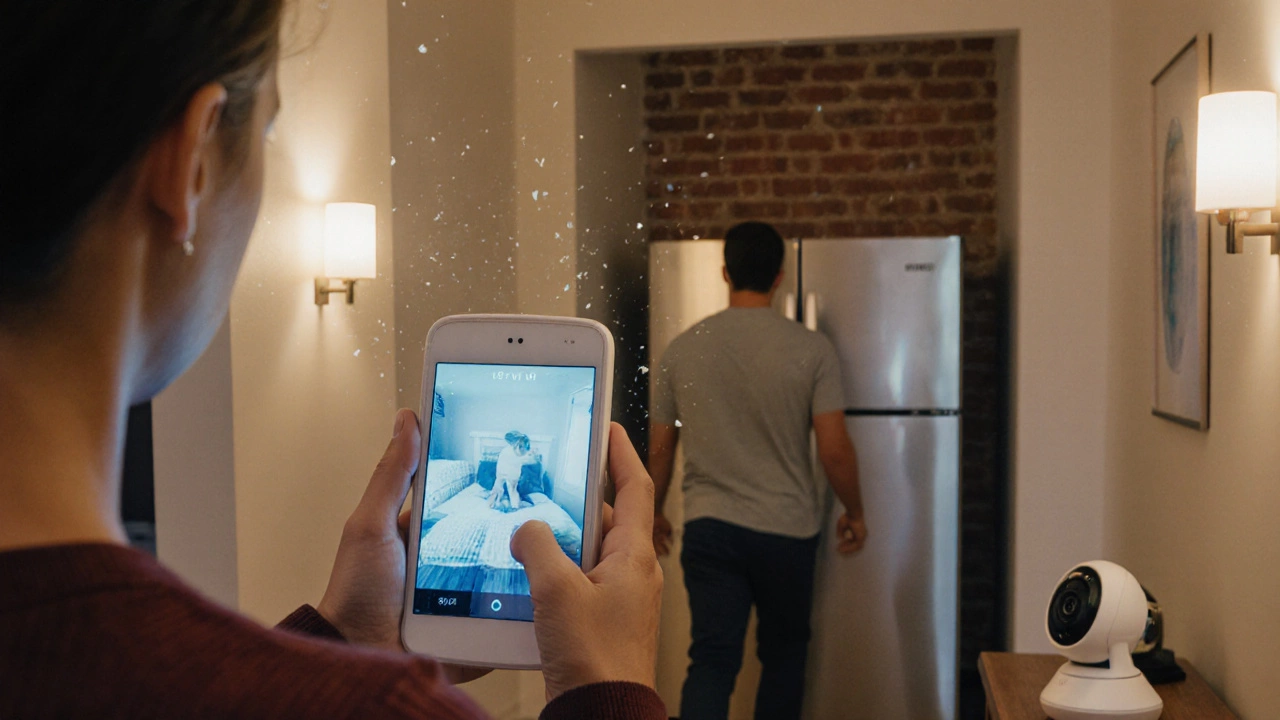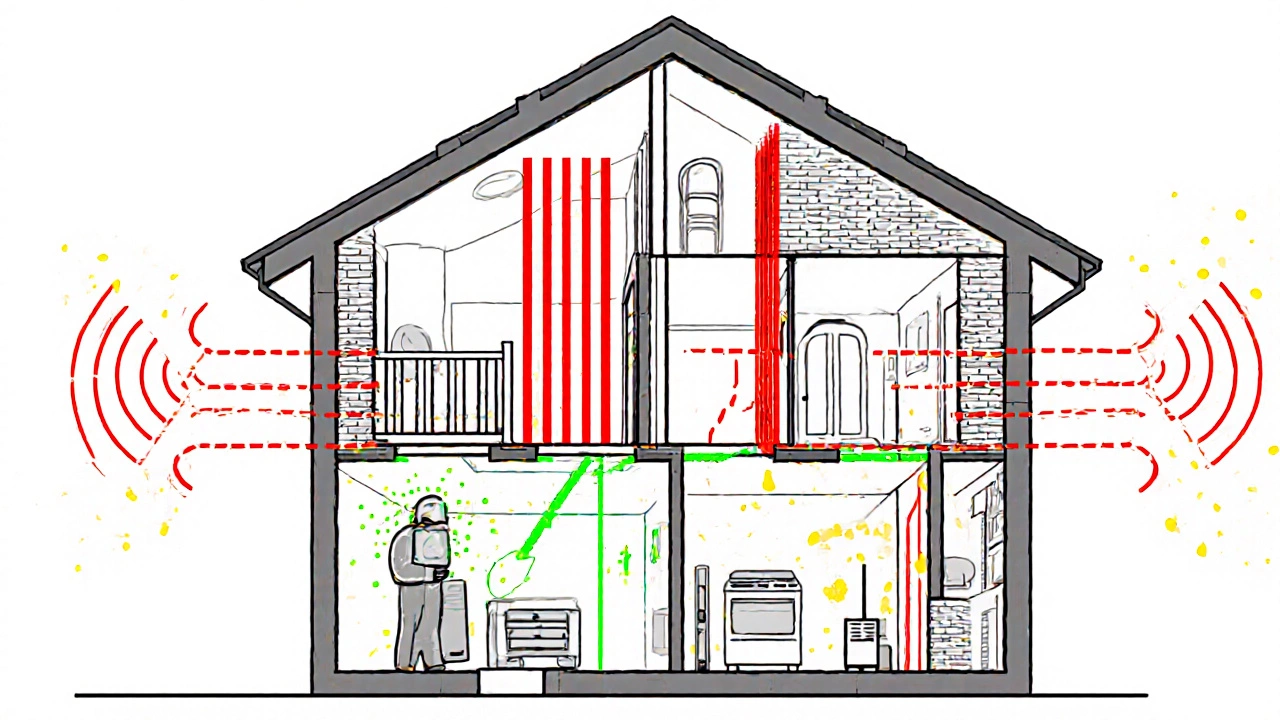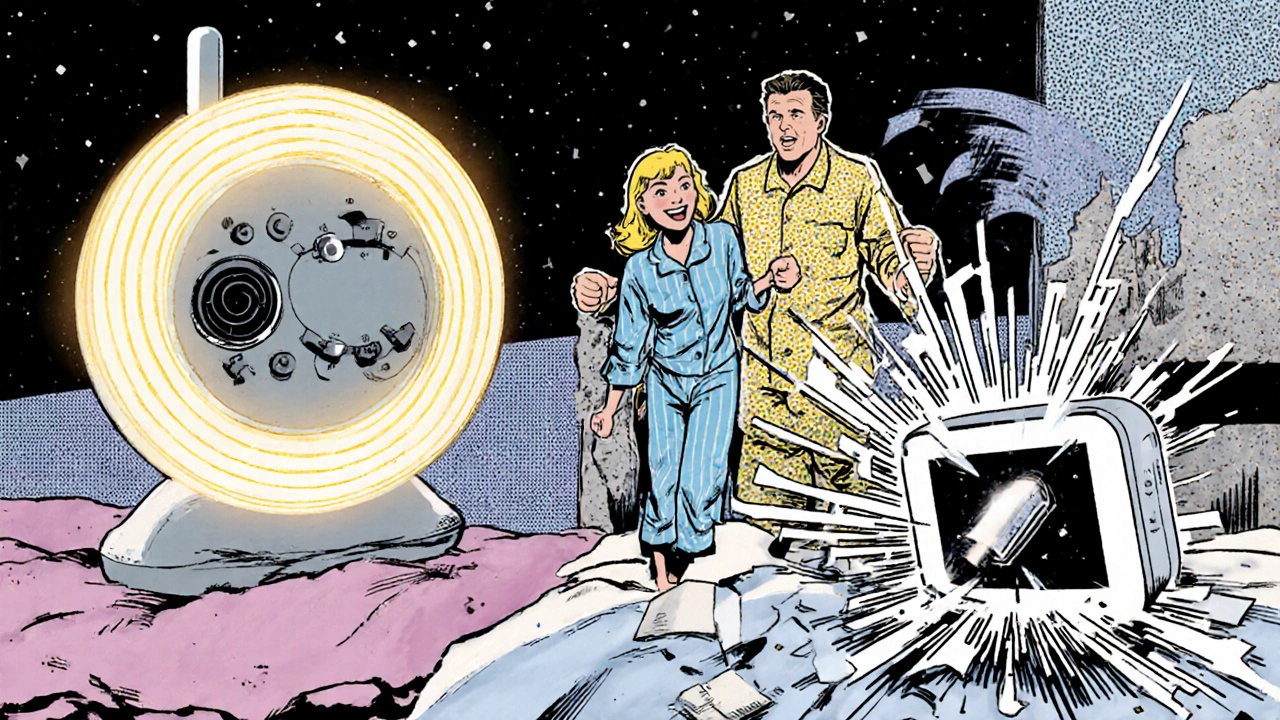How Far Can a Baby Monitor Reach? Real-World Range Tested

Baby Monitor Range Estimator
Real-World Range Calculator
Based on your home's construction and monitor type, we'll estimate the actual range you can expect.
Estimated Range
When you first set up a baby monitor, you assume it’ll work from anywhere in the house. Then you step into the garage to grab something, and the screen goes black. Or you’re in the backyard watering plants, and all you hear is static. That’s when you realize: baby monitor range isn’t just a number on the box-it’s the difference between peace of mind and panic.
What the numbers on the box don’t tell you
Most baby monitors list a range like "1,000 feet" or "300 meters." That sounds impressive-until you realize those numbers are measured in open fields with no walls, no Wi-Fi routers, no metal studs, and zero interference. In the real world, your home is a maze of signals killers. Drywall slows things down. Brick and concrete kill them. Metal appliances, mirrors, and even water pipes act like signal shields. A monitor that claims 1,000 feet might only work reliably up to 150 feet inside a typical home.One mom in Toronto tested three popular models in her 2,200-square-foot house with thick plaster walls. The highest-rated monitor on paper only worked clearly from the master bedroom to the nursery-about 40 feet. But when she walked into the basement laundry room, the video cut out completely. The cheapest model, a basic audio-only unit, actually held signal better because it used a simpler radio frequency that punched through walls more easily.
Audio vs. video: which has better range?
Audio-only baby monitors usually win in range. They operate on the 49 MHz or 900 MHz frequency bands, which travel farther and penetrate walls better than the 2.4 GHz or 5 GHz bands used by most video monitors. That’s why older, analog monitors still have loyal users-even in 2025.Video monitors, especially Wi-Fi models, rely on your home network. That means your monitor’s range is tied to your router’s signal. If your Wi-Fi drops in the nursery, your monitor drops too. Even the best Wi-Fi baby monitors struggle in homes with poor router coverage. A 2024 Consumer Reports test found that 6 out of 10 Wi-Fi baby monitors lost connection in rooms more than 50 feet from the router, even with a modern mesh system.
But here’s the twist: some newer video monitors use DECT (Digital Enhanced Cordless Telecommunications) technology-same as cordless home phones. These don’t use Wi-Fi at all. They create their own secure, interference-free signal. Models like the Nanit Pro and the Eufy SpaceView use DECT and hold signal up to 1,000 feet in open space, and still work reliably through two drywall walls and a floor in most homes.
What actually affects range in your home
It’s not just distance. It’s what’s between you and the baby. Here’s what kills signal in real homes:- Thick concrete or brick walls (common in older homes or basements)
- Large metal appliances (refrigerators, washing machines, ovens)
- Wi-Fi routers, smart TVs, and Bluetooth speakers (they jam the same frequencies)
- Water tanks or large fish tanks (water absorbs radio waves)
- Multiple floors-especially if the nursery is in the basement or attic
One dad in Vancouver installed a video monitor in his 1950s bungalow. The nursery was on the main floor, and he wanted to check on his baby from the home office in the basement. The monitor worked fine until he turned on the washing machine. The motor’s electromagnetic interference drowned out the signal. He switched to a DECT audio monitor, and the problem vanished.

How to test your baby monitor’s real range
Don’t trust the box. Test it yourself. Here’s how:- Place the baby unit in the nursery, powered on and connected.
- Take the parent unit and walk slowly away from the nursery, door by door.
- Stop at every room and check: Is the video clear? Is the audio crisp? Is there lag or static?
- Go outside-patio, driveway, front yard. Does it still work?
- Test during peak Wi-Fi usage: when someone’s streaming, gaming, or video calling.
- Try it with metal objects nearby: open the fridge, stand next to the microwave.
Write down where the signal drops. That’s your real range. If it doesn’t cover your usual spots (like the kitchen, laundry room, or backyard), you need a better model-or a signal booster.
How to extend your baby monitor’s range
If your monitor cuts out in key areas, you don’t have to buy a new one. Try these fixes first:- Reposition the baby unit. Place it higher up, away from metal surfaces. A shelf near the ceiling often works better than a nightstand.
- Move your Wi-Fi router closer to the nursery. Even a few extra feet can help.
- Use a Wi-Fi extender or mesh node near the nursery. This boosts the signal for Wi-Fi monitors.
- For DECT or analog models, avoid placing the parent unit near other electronics. Keep it on a wooden table, not next to your laptop.
- Some brands sell signal boosters. The Babysense range extender, for example, can double the reach of compatible models.
One parent in Calgary had a dead zone in her basement rec room. She bought a $25 Wi-Fi repeater, plugged it into an outlet halfway between the nursery and her couch, and suddenly her video monitor worked perfectly. No new monitor needed.

When to upgrade your baby monitor
You should consider upgrading if:- Your monitor loses signal in rooms you regularly use (kitchen, laundry, backyard)
- You hear constant static or delays longer than 2 seconds
- It doesn’t work when your Wi-Fi is busy
- You’ve tried all the fixes and it still drops out
For homes over 2,000 square feet or with thick walls, go for a DECT video monitor like the Eufy SpaceView or the Nanit Pro. For larger properties or outdoor use, the Arlo Baby with external antenna offers the best range-up to 1,500 feet in open areas, and still works through three walls indoors.
And if you just need to hear your baby cry? A simple analog audio monitor like the VTech DM221 still outperforms many fancy video models when it comes to reliability. Sometimes, less tech is more.
What to look for when buying a new baby monitor
When you’re ready to replace or upgrade, focus on these three things:- Technology type: DECT > analog > Wi-Fi for range and reliability
- Frequency: 900 MHz or 2.4 GHz DECT is better than 5 GHz Wi-Fi
- Antenna design: External antennas (even small ones) improve signal
Avoid monitors that only work with a smartphone app unless you’re sure your Wi-Fi is rock-solid. If your internet goes down during a storm, you’re left blind. A monitor that works without Wi-Fi is a backup you’ll thank yourself for.
Final tip: Always have a backup plan
Even the best monitors can fail. Battery dies. Signal drops. Router resets. That’s why every parent should have a second method to hear their baby. A simple audio-only monitor, even an old one, makes a great backup. Or keep a spare baby monitor in the drawer. You don’t need it every day-but when you do, you’ll be glad it’s there.How far should a baby monitor reach in a typical house?
In a typical two-story home with drywall walls, a reliable baby monitor should work clearly up to 150-200 feet. That covers most layouts-from the nursery to the kitchen, living room, or master bedroom. If your monitor drops signal before 100 feet, it’s likely using weak Wi-Fi or low-quality radio tech. DECT models perform best in these situations.
Can baby monitors work through walls?
Yes, but not all walls are equal. Drywall lets signals pass with minor loss. Brick, concrete, and metal studs block them. Water tanks, mirrors, and large appliances also interfere. Audio-only monitors using 900 MHz frequencies handle walls better than video monitors using Wi-Fi. DECT video monitors are the next best thing-they’re designed to punch through multiple interior walls without losing signal.
Do Wi-Fi baby monitors have better range than non-Wi-Fi ones?
No. Wi-Fi baby monitors rely on your home network, so their range is limited by your router’s coverage. In homes with poor Wi-Fi, they often have worse range than non-Wi-Fi models. DECT and analog monitors use dedicated radio frequencies that travel farther and aren’t affected by network congestion. Many parents find that a $50 analog monitor outperforms a $300 Wi-Fi model in real-world use.
Can I use a baby monitor outside?
Some can, but most can’t. Standard baby monitors are designed for indoor use. If you want to use one on the patio or in the yard, look for models specifically rated for outdoor range-like the Arlo Baby or the Eufy SpaceView. These can reach up to 1,500 feet in open air. But even then, trees, metal fences, and weather can reduce performance. Always test it before relying on it.
Why does my baby monitor cut out when I use the microwave?
Microwaves operate on the same 2.4 GHz frequency as many Wi-Fi baby monitors. When it turns on, it creates electromagnetic interference that drowns out the monitor’s signal. This is why DECT monitors (which use 1.9 GHz) are better-they don’t overlap with household appliances. If you notice this problem, try moving the monitor away from the kitchen or switch to a DECT model.
Is there a baby monitor that works in every room?
There’s no magic monitor that works everywhere, but some come close. DECT video monitors like the Nanit Pro or Eufy SpaceView are the most reliable across multiple rooms and floors. For homes over 2,500 square feet or with thick walls, consider adding a signal extender or using a second monitor in a dead zone. Always test before buying.